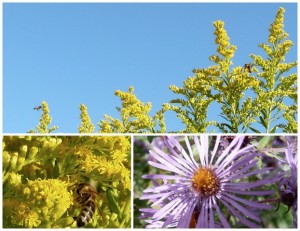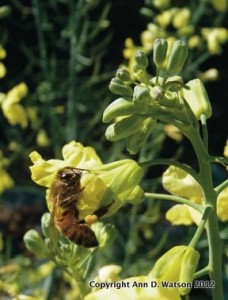The sweetness of fall and preparing for winter
The honey bees are going all out, searching the goldenrod plants for every last flower that offers another grain of pollen, another drop of nectar, carrying their precious loads of gold back to the hive. The honey they are making now will help them through the long winter. Purple asters are flowering, and these too give nectar for spicy aster honey.
As I watch the bees, am I preparing too? Am I taking into my being the warmth of the sun, the blue jay’s sharp cry, the blades of green, the late-blooming dandelion? Am I storing up these things like the bees store honey, to be brought out like precious jewels during the cold days ahead?
Annie Watson


